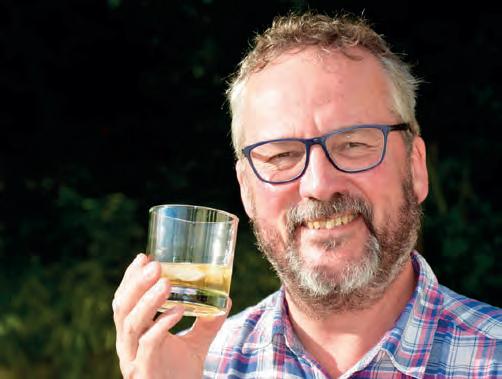
6 minute read
Happy Feet
Founding Footsteps Caterham parent Camilla Bowry, founder of Sal’s Shoes, tells us of her unexpected journey into the charity sector...
SHOES SAL’S
Advertisement
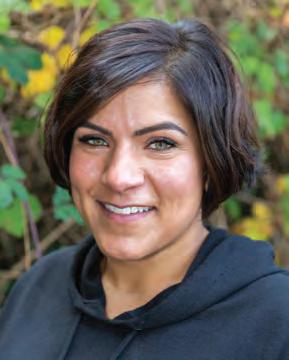
Progressing through the school years and pairs of shoes seem somehow a natural pairing. The ‘back to school’ September deadline is marked by millions with a trip to the shoe shop to be duly measured and kitted out in the shiniest pair of black shoes – not to mention the new trainers and rugby or lacrosse boots which accompany the necessary ‘sensible’ school shoes.
Despite this ritual, all too familiar to many, there are an estimated 300 million barefoot children worldwide and an estimated 58 million children of primary school age who do not benefit from a school education. Of those outside of education, around 29 million are there because they do not have the means to access school education and in many countries not owning or wearing a pair of shoes means that you cannot go to school.
For Caterham parent Camilla Bowry, it was an outgrown yet barely worn pair of her own child’s shoes that started a remarkable journey. A journey which has seen her shortlisted for 2015 Asian Women of Achievements Awards, 2015 Stylist Magazine Entrepreneur Award nominee, 2017 Daily Mail Inspirational Women of the Year Award and crucially has enabled her to repurpose over a million pairs of children’s shoes.
Says Camilla: “Five years ago, when faced with a collection of our son Sal’s outgrown shoes, I sought out charities who could donate them to those most in need. Surprisingly, there wasn’t a single organisation that could tell me where Sal’s pre-loved shoes would actually end up.
I decided to cut out the middle man. Having grown up in Africa, and with a network of family and friends scattered all over the world, I decided that if no one was willing to tell me where exactly Sal’s shoes would end up walking again, I would deliver them there myself. A parcel was sent to a friend overseas, who distributed them on a children’s oncology ward and sent back a photograph of a child wearing Sal’s first pair of shoes; Sal’s pair of shoes had become another’s.
After initially collecting more outgrown children’s shoes from family and friends, word spread and soon I was inundated with pairs of barely worn shoes; ‘Sal’s Shoes’ had been born.”
In the first year of Sal’s Shoes, Camilla and her growing team collected 4,805 pairs of shoes and distributed them in eight countries, including the UK. Fast forward five years and the charity has now found new feet for over a million pairs of pre-loved children’s shoes in 38 countries around the world. What is a simple provision for many is making a real difference to so many children.
“Having a pair of shoes for these children is life changing. For those for whom walking with shoes is a rarity, they are extremely vulnerable to infection by parasites, such as hookworm; while injuries to the feet and ankles can lead to ulcers and other conditions which are almost always left untreated.”
Whilst the beginning of Sal’s Shoes was organic, born from a moment familiar to so many parents, Camilla has approached the charity’s growth with a specific strategy and local knowledge.
“One of the very reasons I set up Sal’s Shoes, after contacting charities that do similar, was so that I (and all shoe donors) could try and ensure that I know exactly where and how the shoes are being distributed. Yes, shoes being shipped in by the tonne in containers could mean local shoe makers are being put out of business, but I do also believe that shoes sent in smaller numbers to those children desperately in need (which includes here in the UK) may just mean those children now have a pair of shoes to go to school in, and receive an education and grow up and gain full-time employment and help to make their country self-sufficient.
This is the reason I chose to study Social Anthropology alongside Development Studies. As a Social Development Consultant I have spent a lot of time working alongside, for example, civil engineers building roads in the developing world to ensure development work was carried out in a sustainable manner: site offices were built as permanent structures so that they could be left behind once the works were complete as clinics and classrooms; irrigation works were set up to ensure drainage to farm land and not as waste matter.”
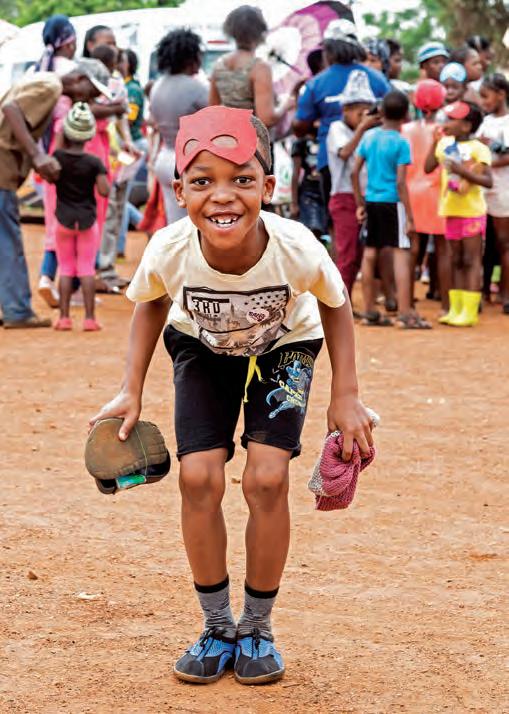
In the first five years, Sal’s Shoes collected and distributed more than one million pairs of shoes to 38 countries around the world.
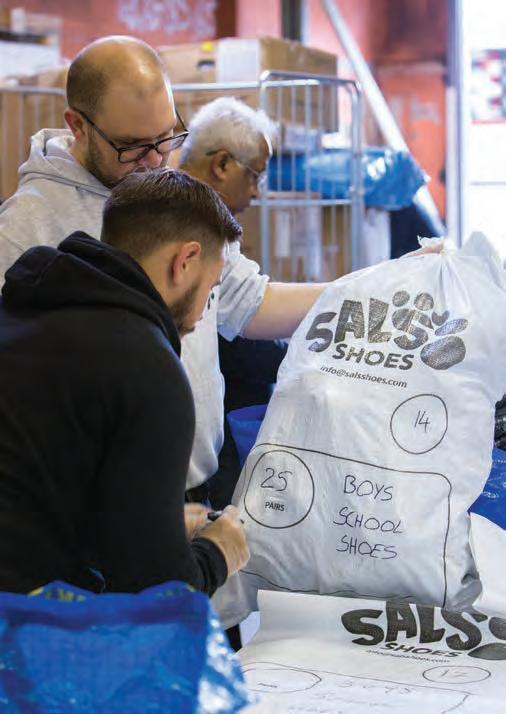
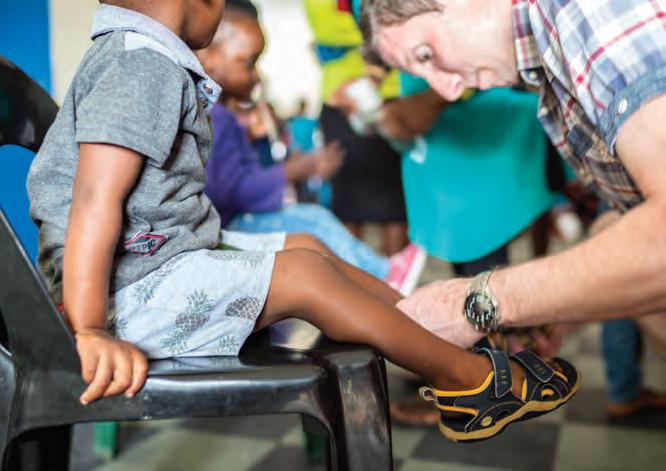
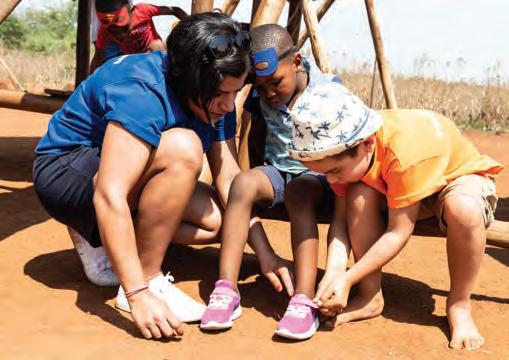
For more information about Sal’s Shoes visit salsshoes.com or follow on Facebook or Twitter
What have been your greatest challenges, and your greatest successes so far?
Given some of the journeys that Sal’s Shoes set off on, our greatest challenge is always logistics. Thankfully, in turn, our greatest success has been that all our consignments have always found their new feet where we intended them to.
What would you like Sal’s Shoes to achieve during the next five years?
Unfortunately there is always likely to be barefoot children in the world, thankfully there will always likely be shoes that are outgrown before they are outworn and we’d like to significantly reduce the number of children for whom a pair of shoes is a luxury.
How has social media helped the success of Sal’s Shoes?
When harnessed for good, for all its flaws, social media can be amazing. In the first year of our Toe to Toe school shoes initiative one post on our Facebook page about one school piloting the scheme went on to be shared over 88,000 times. The following year, over 600 schools across the UK approached us wanting to roll out Toe to Toe at the end of the academic year.
What was your own path from school through studying/career and what key points do you think have helped you with all that you have achieved?
I went to Croydon High School and then onto the School of Oriental and African Studies for my BA(Hons) and MA. Without a doubt the seven years spent at the senior school I had the privilege of attending and all the skills I learnt there have had the most impact on my life going forwards. I spent my twenties working my way through a succession of different jobs, which in hindsight was a decade spent gaining experience that would stand me in good stead for what I have gone on to achieve with Sal’s Shoes.
What was it like taking part in the first Caterham School Society Entrepreneurs evening at UBS? (We were delighted to have you there!)
I was honoured to have been asked and thoroughly enjoyed the evening. The format wasn’t one I’m familiar with, which had the speakers rotating round the tables of attendees, but it worked incredibly well and the calibre of questions from the students in particular was impressive.
Who supports you?
A small army of unsung heroes. I’m very aware of my limitations and perhaps fortunate in that I never have a problem asking for help. I think the more direct an opportunity you give people to help, the more likely they are to. This includes a group of Caterham parents who volunteer weekly at our warehouse helping to sort and pack Sal’s Shoes.





